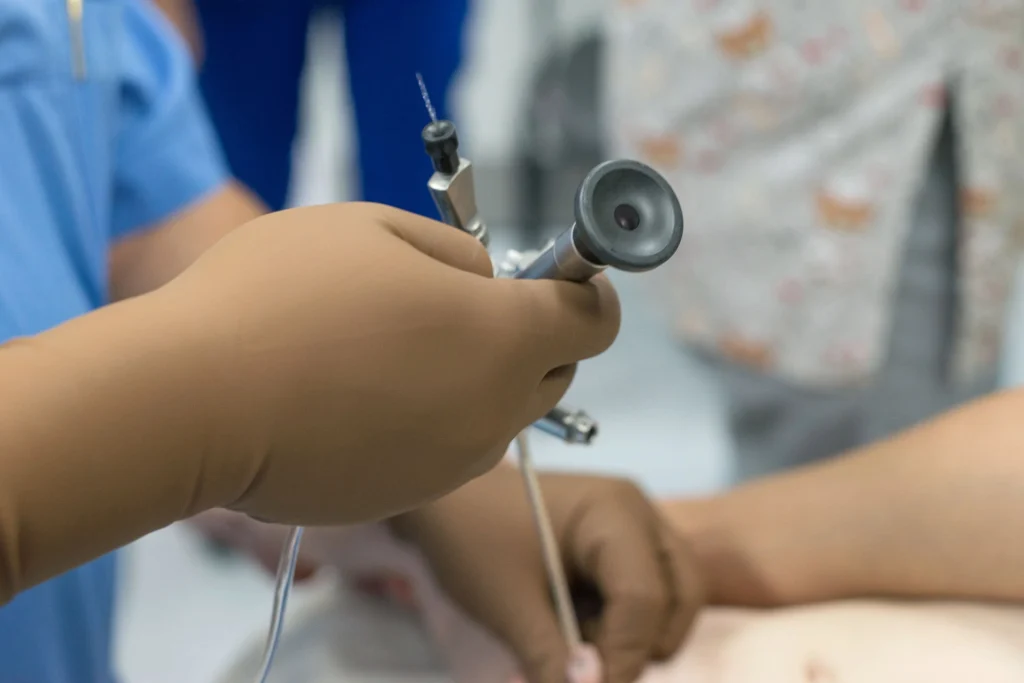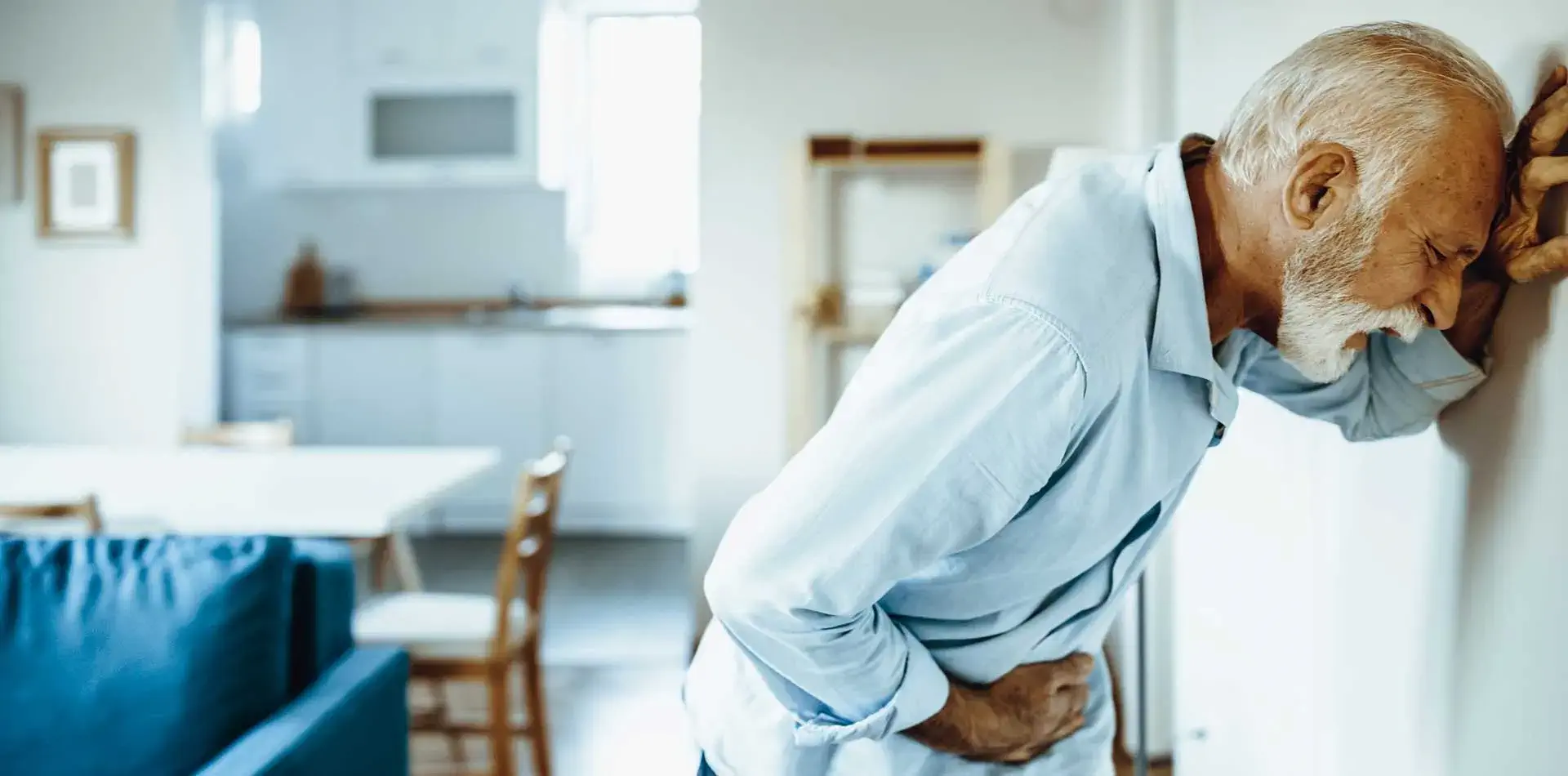
Surgery for Incontinence in The Elderly Male + Non-surgical Ways
What is the best treatment for urinary incontinence in the elderly? What is the surgery for incontinence in the elderly male? What is the recovery time for male incontinence surgery? Urinary incontinence is common in the elderly and affects about 1 out of every 3 elderly people. Some people have incontinence every time they urinate, while many others experience incontinence intermittently. Many people live with incontinence without medical help, because they are afraid that it indicates a more serious disease or they are embarrassed to talk about it in front of others, even family members.
Other people mistakenly believe that incontinence is a natural part of the aging process and assume that nothing can be done about it. On the contrary, urinary incontinence is never normal and when it occurs, it is often treatable and treatable. Not being able to go to the bathroom in time or unexpectedly losing bladder control can be very debilitating. But what causes this condition and what can we do to treat it? Specialists are able to treat urinary incontinence in patients by using therapeutic methods such as exercise, biofeedback, electrical stimulation and surgery.
In this article from the humanhealthmag, we are going to talk about the surgery for incontinence in the elderly male. Treatment of stress urinary incontinence is possible with SLING surgery, and in this post, we review everything you need to know about urinary incontinence in the elderly.
Surgery for Incontinence in The Elderly Male: What Is Urinary Incontinence in the Elderly?
Before dealing with the issue of the surgery for incontinence in the elderly male, it is better to know what incontinence is in the elderly and what can cause it. Urinary incontinence occurs when a person accidentally leaks urine. It can happen to anyone, but it is much more common in older people, especially in people who have a vagina. When a person urinates, their bladder muscles tighten to push the urine into the urethra. Then the muscles around the urethra relax so that the urine leaves the body. Incontinence happens when these muscles relax without warning.Really, do you know why seniors should not go to summer camp?

Causes of Incontinence in the Elderly
Urinary incontinence in the elderly can occur for various reasons. The most common causes include:
- Obstruction of prostate enlargement
- pelvic organ prolapse
- Overactive or weak muscles of the bladder
- Weakness of the pelvic floor muscles
- Diseases such as arthritis, which make it difficult to go to the toilet on time
- Diseases such as diabetes, Parkinson’s disease or MS, all of which can damage the nerves that control the bladder.
- Drinks such as alcohol, caffeine and carbonated drinks
- Artificial sweeteners
- Foods that are rich in spices, sugar, or acid
- High doses of vitamin C
- Blood pressure drugs, heart drugs, muscle relaxants and sedatives
Surgery for Incontinence in The Elderly Male: Types of Urinary Incontinence
What is the best surgery for incontinence in the elderly male? Before answering these questions, it is better to know how many types of urinary incontinence there are and when each type occurs.
Urge Incontinence
The most common type of urinary incontinence is Urge incontinence, which means that the urine is passed before reaching the toilet. A stroke, dementia, Alzheimer’s, MS, Parkinson’s, or injury can lead to urge incontinence or irritable bladder.
Stress Incontinence
Stress incontinence is a condition in which urine is released when pressure is placed on the bladder, such as when exercising, coughing, sneezing, laughing, or lifting heavy objects. Some elderly people’s bladder muscles are so weak that even when they get up from a chair, urine is released. Stress incontinence is more common among women due to pregnancy and childbirth, in addition, the decrease in estrogen during post-menopause also leads to atrophy (shrinkage) of muscle tissue and as a result urinary incontinence. Men who have problems with prostate enlargement or have a history of prostate cancer treatment or prostate surgery also face stress incontinence.

Overflow Incontinence
Incontinence due to overflow of urine is a condition in which a small amount of urine is released from a completely full bladder. This group of patients often feel the need to go to the toilet during the day and often suffer from the release of small amounts of urine. Obstruction of the urinary tract, enlarged prostate or damage caused by prostate surgery, constipation, fecal blockage, spinal cord injury or diabetes are among the causes of this problem.
Functional Incontinence
Functional incontinence occurs when the elderly cannot go to the toilet quickly and on time due to rheumatism or other disorders. Neurological disorders, complications of stroke, Alzheimer’s or MS also leads to functional incontinence. The patient often feels the need to empty the bladder, but his/her brain is not able to show the appropriate reaction or issue a quick command to go to the toilet.
What Is the Best Treatment for Urinary Incontinence in The Elderly? Non-surgical Methods
In this section, we look at the treatment of urinary incontinence for elderly men and the treatment of urinary incontinence in elderly women. Then we will explain the surgery for incontinence in the elderly male in detail.
Change of lifestyle
- Determine the time of your food and drink consumption during activities.
- Train your bladder by delaying going to the bathroom every time you feel the urge to urinate. Bladder training is done for this purpose so that the patient can gradually lengthen the time between two bladder emptyings and delay urination.
- Another method of bladder training is double emptying; That is, after urinating, the patient waits for a few minutes and then urinates again. In this way, the patient learns to empty the bladder completely. Timing to go to the toilet also helps patients who have mobility problems or neurological disorders.
- Do exercises to strengthen the pelvic floor muscles. Another method of behavioral therapy is doing Kegel exercises. In this method, the nurse teaches the elderly to contract the pelvic muscles like when holding urine and stay in the same tight position for 10 seconds and then relax the muscles. The nurse helps the elderly to do this exercise 3 to 4 times a day by arranging a regular schedule. This exercise strengthens the pelvic floor muscles and increases urinary tract resistance and bowel control.
Medications
- Anticholinergic drugs, such as oxybutynin, for over-relaxation of the bladder muscles
- Alpha blockers, such as tamsulosin, help people with incontinence need to empty the bladder completely
- Mirabegron works to relax the bladder muscles and help increase the amount of urine your bladder can hold.
- Botulinum toxin type A or Botox, to ease the bladder muscles by injection

Surgery for Incontinence in The Elderly Male
When other methods of treating urinary incontinence are not effective, surgery can be a treatment option. Currently, surgery is performed in most cases with minimal invasiveness and without hospitalization. There are 2 types of surgery for incontinence in the elderly male & to help keep the bladder in place and treat stress urinary incontinence:
- Artificial urinary sphincter balloon (AUS): This balloon is placed around the neck of your bladder to close the urinary sphincter until it’s time to urinate. When you are ready to urinate, a valve placed under your skin inflates the balloon. Then the urine is released and the balloon is filled again.
- Sling procedure: The doctor uses tissue or synthetic material to create a supportive pouch around the bladder neck to keep the urethra closed when sneezing, coughing, running, or laughing.
Preoperative Care for Surgery for Incontinence in The Elderly Male
Before the surgery for incontinence in the elderly male, the patient is visited by anesthesiologists and given the necessary recommendations. The use of aspirin or drugs used for foot pain and joint pain should be stopped 10 days before the operation. Spinal anesthesia is usually used, and sometimes general anesthesia is used. In spinal anesthesia, a narrow needle is inserted into the spinal cord from between the two vertebrae from the lumbar spine and an anesthetic is injected, which completely numbs the lower back.
Postoperative Care for Surgery for Incontinence in The Elderly Male
24 hours after the surgery for incontinence in the elderly male, the gases inside the vagina are removed and the patient starts his normal diet slowly and can get out of bed and walk with help. The intravesical catheter remains for 3-5 days depending on the opinion of the surgeon. During this time, the patient must have a bowel movement and be able to walk. Injectable drugs are converted into oral. After removing the catheter and urinating, the patient is discharged. After the catheter is removed, the patient may feel a burning sensation, urgency to urinate, or drop a few drops of urine, which usually resolves after a few weeks and is nothing to worry about.
After returning home, you should avoid heavy activities or lifting heavy objects (more than 5 kg) or traveling for 6 weeks. Drink plenty of fluids and take the medicines prescribed by your doctor regularly. Avoid intercourse for 2 months after surgery. Your first visit is 7-10 days after the surgery, which is to remove the abdominal stitches and possibly stop the prescribed drugs. Your second visit is one month after the surgery to check the urinary control status. Our recommendation is to avoid consuming stimulating foods such as pepper, spices, raw onions, garlic, pickles, sausages, sausages, leeks and chives for 2 months after the surgery for incontinence in the elderly male.
Concluding Remarks
In previous article, we talked about elderly mood disorders. In this article, we explain types of surgery for incontinence in the elderly male. Elderly people with urinary incontinence are isolated due to cultural and social problems. Also, these people face a decrease in the quality of life and the limitation or avoidance of sexual activity. Therefore, for the care of these elderly people, they need a skilled nurse to help them return to their former life. Urinary incontinence can make people prone to urinary tract infections, skin rashes, skin fragility, increased risk of hospitalization, emotional distress, decreased social interactions, and quality of life. These cases are all complications of urinary incontinence in the elderly.

FAQs
At What Age Is Urinary Incontinence More Common?
Although urinary incontinence can be seen at any age, it is more common among the elderly. One out of five people over 40 years of age suffers from symptoms of overactive and irritable bladder, urge incontinence or frequent urination, and some of them are faced with urinating before reaching the toilet.
What Is the Surgery for Incontinence in the Elderly Male?
When other methods of treating stress urinary incontinence are not effective, surgery can be a treatment option. In general, there are two surgeries for the treatment of urinary incontinence in the elderly, which are usually performed with minimal invasiveness and without hospitalization.
